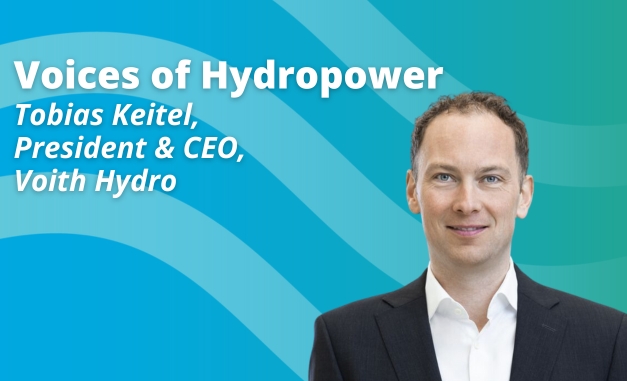The UK has the opportunity to lead the way on building clean energy storage

The United Kingdom, host of the COP26 climate conference, could be an exemplar of how to plan and deliver reliable and renewable energy grids, writes IHA Energy Policy Manager Rebecca Ellis – provided it seizes the moment and invests in the clean storage provided by hydropower.
The global gas shortage has provided a brutal reminder of the need to shift from reliance on fossil fuels.
As countries look beyond gas and coal for their future generation and grid flexibility needs, and instead invest in variable renewables, the need for clean, long-duration energy storage solutions such as those provided by sustainable hydropower in times of crisis grows ever more urgent.
In response to the recent gas crisis, UK Secretary of State for Business, Energy and Industrial Strategy Kwasi Kwarteng confirmed his government is “looking into” the potential for building more hydropower projects. With the UK holding the Presidency of COP26, the significance of this potential gear shift cannot be overstated.
Hydropower, especially pumped storage hydropower (PSH), has a fine history of supporting grids at short notice during emergencies, including in advanced economies such as the UK. Two recent incidents, a power-outage in the UK in August 2019, and a near-blackout in continental Europe in January 2021, both show how long-duration storage and hydropower in particular are needed to stabilise the grid in a crisis.
The UK today has roughly 4 GW of storage, of which about 3 GW comes from pumped hydro. This capacity could expand in the coming years, with an additional 2.4 GW given planning consent and a further 2.8 GW currently awaiting consent. This limited expansion however falls far short of the 13 GW of new energy storage that the National Grid says is required by 2030. Moreover, without a supporting national policy framework to incentivise the market, there is no certainty that any new additional capacity will be constructed.
There is in fact ample potential for building more PSH across the UK, especially at off-river, closed-loop sites, including in abandoned coal mines. A global atlas developed by Professor Andrew Blakers at Australian National University identified more than 600,000 potential locations for pumped storage around the world, including numerous potential sites in the UK.
Not only are there many potential locations for new developments, PSH is also widely seen as a highly cost-effective option over its long lifetime. The UK Committee on Climate Change for example highlighted in its 6th Carbon Budget a recent study that shows it may provide the cheapest form of one-week duration storage available.
With the forthcoming release of a UK Taxonomy by the Green Technical Advisory Group (GTAG) – an expert group tasked with creating a framework for defining environmentally sustainable investments – there is an opportunity for London’s finance community to make a positive impact on hydropower development in the UK and globally.
The UK Taxonomy must ensure that hydropower investment criteria is aligned with well-established global criteria, like the recently released hydropower criteria developed by the Climate Bonds Initiative (CBI). The International Hydropower Association (IHA) worked together with the CBI to ensure the criteria are aligned with sector guidelines and tools, including the newly launched Hydropower Sustainability Standard, a certification and labelling scheme.
Echoing Kwasi Kwarteng’s interest in developing new hydropower, UK climate change envoy Alok Sharma recently gave his backing to the Hydropower Sustainability Standard. “The flexibility and storage potential of hydro can make it a critical part of the renewable energy mix,” he declared at September’s World Hydropower Congress. “So, I welcome the industry’s commitment to the new Hydropower Sustainability Standard because we want to see sustainable hydro play its part in the clean energy transition.”
The UK, as an international finance centre, now has the opportunity to provide global leadership to help encourage investment in the hundreds of gigawatts in sustainable, long-duration energy storage required to deliver global climate change targets.
While the upfront investment is relatively large, there are huge potential cost savings, many of which can be passed on to customers. A recent study by Imperial College found that just 4.5 GW of new long-duration pumped hydropower storage with 90 GWh of storage could save up to UK£690m per year in energy system costs by 2050.
Mark Carney, Former Bank of England Governor and UN Climate Envoy, addressing the challenges in power markets, argued recently that “there is a central role for pumped hydropower storage.” He went on to observe that, in the UK, “pumped storage activity is at its highest level in over 60 years.
“This provides visibility about what will happen to other markets, as renewable penetration increases, which is why we need to plan ahead,” Mr Carney asserted. He was speaking at the launch of a series of reports by the International Forum on Pumped Storage Hydropower, an initiative co-chaired by former Australian Prime Minister Malcolm Turnbull and the US Department of Energy.
One of the forum’s working groups looked at the UK policy terrain and provided recommendations on appropriate funding mechanisms to ensure that enough long-duration storage is built and commissioned.
Among the measures recommended was that the UK government, following its current Large-Scale and Long-Duration Storage Consultation, should immediately launch a consultation on design options for a Cap and Floor policy to give developers and operators better investment certainty. The working group argued the government should aim to have the mechanism established by the end of 2022, if not earlier.
The working group also recommended that the government consider establishing energy storage targets (in GW and GWh) for 2030, 2040 and 2050, which, if supported by a best-in-class policy and regulatory framework, would give both developers and investors the confidence to plan and invest in these long-term assets.
With a UK government Capacity Market Call for Evidence having recently closed, IHA hopes to see long-duration storage, in particular PSH, better financially supported in alignment with the country’s net zero strategy.
We don’t have time to waste. The recent IPCC report confirmed that burning fossil fuels is directly contributing to climate change, so we must break the cycle of dependence on them and unleash more renewable energy. A range of innovative technologies will be necessary, but let’s not leave out PSH, which has proven time and time again its ability to support the electricity grid over long periods.
COP26 provides an opportunity for the UK to establish a global blueprint for future investment in sustainable energy. It’s time to seize the moment.
Read more
- UK experts at COP26 call for market certainty to deliver long-duration energy storage
- Read the 2021 Hydropower Status Report
- View IHA’s UK country profile










